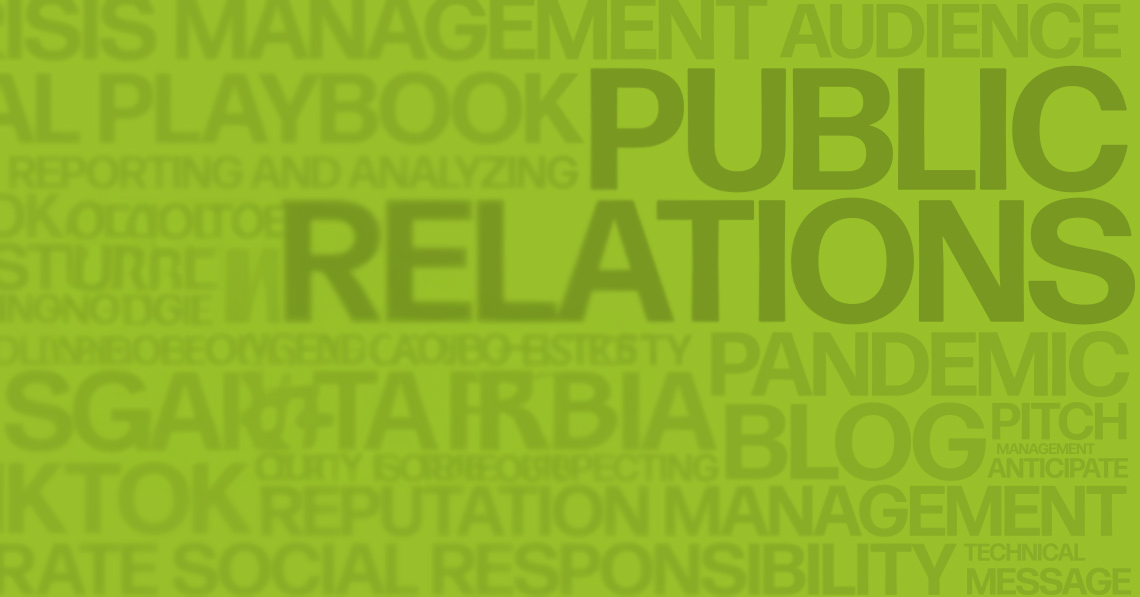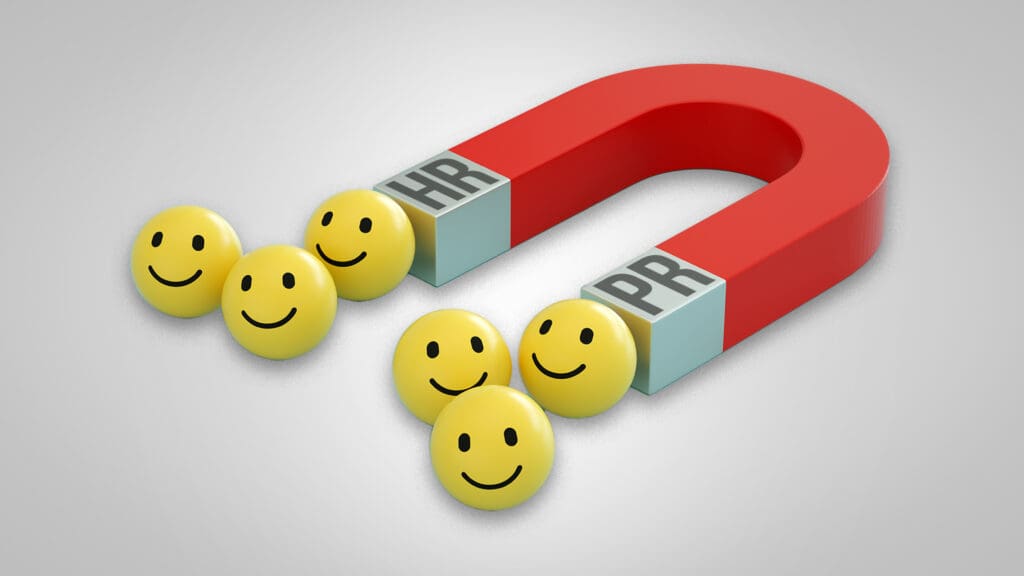
What Does Public Relations Do? (Hint: It’s More Than Press Releases)
In 2020, typical communications strategies took a back seat amid the global COVID-19 pandemic. Many businesses quickly pulled all marketing efforts during the start of COVID-19, evaluating how to best handle this crisis and still get key messaging to the public without appearing tone-deaf to what was happening in the world around us. But while marketing efforts may have temporarily slowed down for some, public relations (PR) professionals were busier than ever.
From local nonprofits to Fortune 500 companies, most businesses quickly saw just how important PR would be to their 2020 marketing strategies. PR became a critical and cost-effective part of most plans. Here, we’ll explore the effectiveness of public relations while answering the question, “What does public relations do?”
The Effectiveness of PR
Why was PR so effective? From March to April in 2020 alone, American use of media skyrocketed by more than three hours per day, according to a study by the Interactive Advertising Bureau (IAB). In fact, 87% of respondents said they were consuming more media. Consumption increases were led by everything from broadcast TV, social media video content, social media livestreams, online media coverage, radio and podcasts. More media consumption meant more opportunities for PR pros to pitch or produce relevant content for consumers.
Shifts in consumer habits
Further changing marketing, consumer shopping habits impacted by COVID fears, and lockdowns shifted significantly to online channels. According to McKinsey Digital, e-commerce experienced five years of growth in just three months as the pandemic took hold.
What Does Public Relations Do?
With these seismic shifts in media consumption and consumer shopping habits, companies quickly realized how efficiently PR content, especially online, could help brands capture the consumer’s and the public’s attention. So, beyond the press release, how can you invest in public relations?
Crisis communications and management
Twenty-twenty was the year for crisis communications, showing us all just how important it is to think ahead and always expect the unexpected. Having a plan and being prepared for any potential incident is step one in crisis management and communications.
Crises can happen at any time and in many different ways, including a small, local coffee shop running out of coffee to Pepsi teaming up with Kendall Jenner in its “Live For Now” campaign, which received global backlash for seeming to trivialize the Black Lives Matter movement and protests. How your brand reacts to a crisis determines how the media and the public will perceive the crisis. Turning a negative into a positive begins with preparedness.
Media relations
Within media relations, PR professionals handle everything from targeted media lists, media pitches, press releases, media advisories and more. From organizing press events to assisting media on-site and compiling a media recap following the event to gauge the type of coverage and sentiment received, there’s a lot that goes into media relations and ensuring overall success for your company or brand. In order to secure strong results and accomplish all of these efforts, media relations begins and ends with having a great relationship with the media.
This year, media relations was extremely important for brands trying to break through while dealing with cuts in advertising dollars. During the first few months of the pandemic, most media outlets were mainly covering COVID-related stories, so it became harder to get pickup on other news happening with businesses and organizations. This is where strong, long-standing relationships with media members really paid off for us.
Maintain relationships with journalists and reporters
It’s important to build and maintain relationships with members of the media—journalists and reporters. You can’t just send a press release or media advisory somewhere and expect it will just be picked up. You have to actually get to know the publications you are pitching. Create a relationship with people you’re reaching out to on the media side to strengthen your organization’s media relations. That way, you can become someone the media will be more likely to pay attention to when your story pitch hits their inbox.
Pitching help from other pros
As an organization, it’s your duty to also know who you are pitching. This is where PR professionals can lend a helping hand. Do you know the correct person to target for your news to ensure pickup for your company or brand? If not, you may consider partnering with a local PR agency that has expertise in this area. They can help you craft a media list and work with you to conceptualize and execute your event, whether virtual or in-person.
You may have interesting news happening internally or externally within your business but haven’t yet pitched the idea to media because you didn’t think it was newsworthy. That’s where PR pros come in. We’re here to help you discover a good media pitch that may have been under your nose and target reporters or media publications that may be interested in that story. PR professionals can help come up with the most creative ways to secure earned media and help ensure that you receive the coverage you are striving for.
Social media
Social media is a great resource for brands to reach both a wider, yet more targeted audience. With the ever-evolving platforms, it is PR practitioners’ job to stay up to date on the latest trends, advancements in social channels and social content that is getting results.
In 2020, PR professionals saw exactly how important social media was as it became one of the main ways that companies were getting their message out to their audience during the pandemic. In addition, more people were turning online for everything – from social media to shopping. As mentioned previously, many companies quickly saw how important online shopping was becoming during COVID and began increasing their social media efforts. While many businesses across the country were forced to do pay cuts or layoffs during the pandemic, many online businesses were thriving and using social media and PR to drive new customers to their online sites.
Keep your social media plan updated
So, you’ve noticed the power of social media—what’s next? How can you best take advantage of your social channels, especially during a time like this pandemic? Although it’s important for your team to have a plan in place for content creation, scheduling, reporting and analyzing, influencer marketing, and monitoring feedback and comments on social media, it’s equally important to revisit your overall plan and your messaging often, especially during a crisis like the COVID-19 pandemic.
While it’s important for all brands and companies to have a social media playbook to help them determine their brand voice, key pillars, overall audience, the best way to distribute their news and content, and optimal posting times, at a time when there is a major increase in social media engagement, it’s time to give the playbook an update, especially if you are a company that can more easily benefit from this increase in activity online. Social media involves real-time response, so every day, PR professionals are monitoring and gauging what is happening both online and in the world to best determine how to adapt for their company or brand.
Event planning
As PR professionals, we often help organizations with all executions of internal and external events. This can include a PR initiative to launch a new product or announcement, or even internal events for your organization, like employee engagement events. It is often the responsibility of the PR professional to help ensure all internal and external events are a success for your organization and team members.
Twenty-twenty threw a wrench in all event planning, with many businesses having to cancel all events for months or turn to virtual events for the first time. Many organizations, especially nonprofits, rely on events to raise significant funds and support for their organizations throughout the year. Canceling all events just wasn’t possible. Instead, they were forced to turn to virtual fundraising events, like virtual races and virtual concerts, to help still have events that were of interest to the community and media and raise significant funds. They turned to PR to come up with new ways to execute ideas to help keep the money coming in during this difficult time.
Thinking out of the box
For example, one of our clients, Susan G. Komen Kentucky, has an event with local restaurants each year to raise awareness surrounding the organization and breast cancer by creating fun desserts with local restaurants. Proceeds from the event go back to the nonprofit and help local breast cancer patients. Our PR Team quickly jumped in to come up with other ways to pull this event off. We understood many restaurants were being hit hard. Understandably, they wouldn’t be able to give back to the organization or have time to create a new dessert to promote.
We saw how popular food trucks were becoming in local neighborhoods as people chose to stay close to home. We knew it could benefit the client to take their effort on the road this year. The organization didn’t just cancel this year’s event. We came up with a new PR idea and executed it for the client. For very few dollars, they were able to use PR to get earned media for this effort and help raise fundraising dollars.

Internal and external communications
Much of our job description as PR professionals involves internal and external communications. Whether it is a newsletter or company magazine, articles, blog posts, speeches, op-eds, or talking points for internal/external use, PR professionals are oftentimes the ones making this happen for organizations and ensuring key messaging is used in all efforts.
Crucial for remote and frontline workers
This year, internal communications was especially important as many employees were working remotely for the first time. Keeping organizations and employees informed of updates and changes both internally and externally due to COVID-19 had many PR professionals busy throughout the pandemic. During these hard times, it was crucial for these PR pros to keep their audience informed.
This was especially true for restaurants this year. Local restaurants took a major hit at the beginning of the pandemic. As rules changed almost weekly regarding takeout and in-person dining, it was vital for these businesses to keep everyone updated. Employees and the external audience needed the latest information. Many restaurant employees and owners were interviewed by media organizations so these businesses needed to develop a key message to share both internally and externally.
Other Aspects of Internal and External Communications
Corporate Social Responsibility: This occurs when a company makes an effort to better the lives of its employees, stakeholders, community or even the world. Corporate social responsibility is a strong way brands can leverage helping their employees while improving how they are seen by the public as a brand. Brands can achieve this by volunteering time and money to a local nonprofit organization or taking a stance on a social movement.
As a most recent example, companies around the U.S. have been speaking out on their stance in support of the Black Lives Matter movement. Many customers began demanding companies speak out on where they stood on the movement. Businesses quickly saw that staying silent was a statement within itself. If they truly supported the movement, they needed to show support—verbally and with action. Corporate social responsibility has become especially important in 2020 as companies begin taking a close look at what they can do to help make a difference.
Media Training: Media training helps to prepare clients for engaging with the media, whether it is on or off camera. It’s important to make sure all key leadership members have media training. Anyone your organization puts on camera needs to understand tips, best practices, and how to best prepare for media encounters. PriceWeber offers media training sessions to organizations and team members.
Reputation Management: Reputation management is a discipline in public relations that encompasses much of what we do. It involves influencing how the public perceives a brand or person. This can be achieved through social media, media relations, crisis communications, and event planning.
Get Expert Help With Your Public Relations
Like many of you, your PR professionals are not typically working a 9–5 job. They are on the go and working around the clock to ensure success for your organization. You may know your PR team is responsible for “drafting a press release.” However, we can assure you there are many other responsibilities and skill sets it brings to the table. This is especially important during a time when all other marketing efforts have been temporarily placed on hold.
Did something above catch your eye? We’re here to help! If your team needs assistance with public relations and social media, let’s talk. Call us at 502-499-4209 or contact us here.
Our Articles Delivered
Signup to receive our latest articles right in your inbox.






